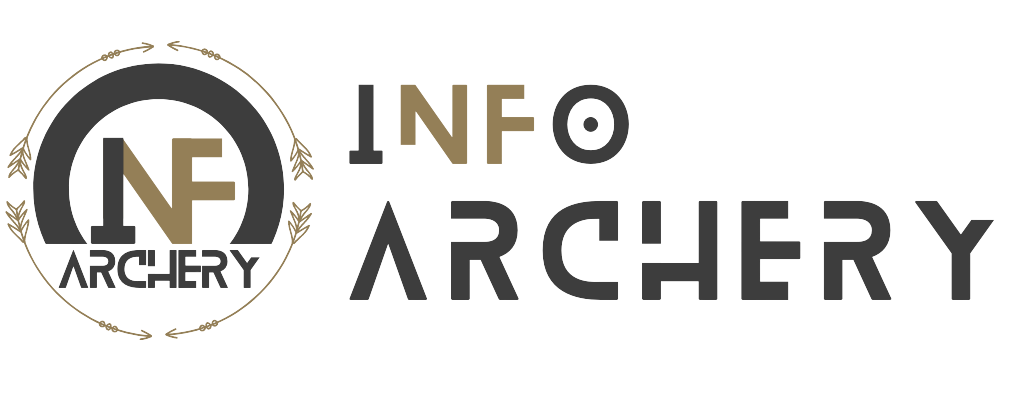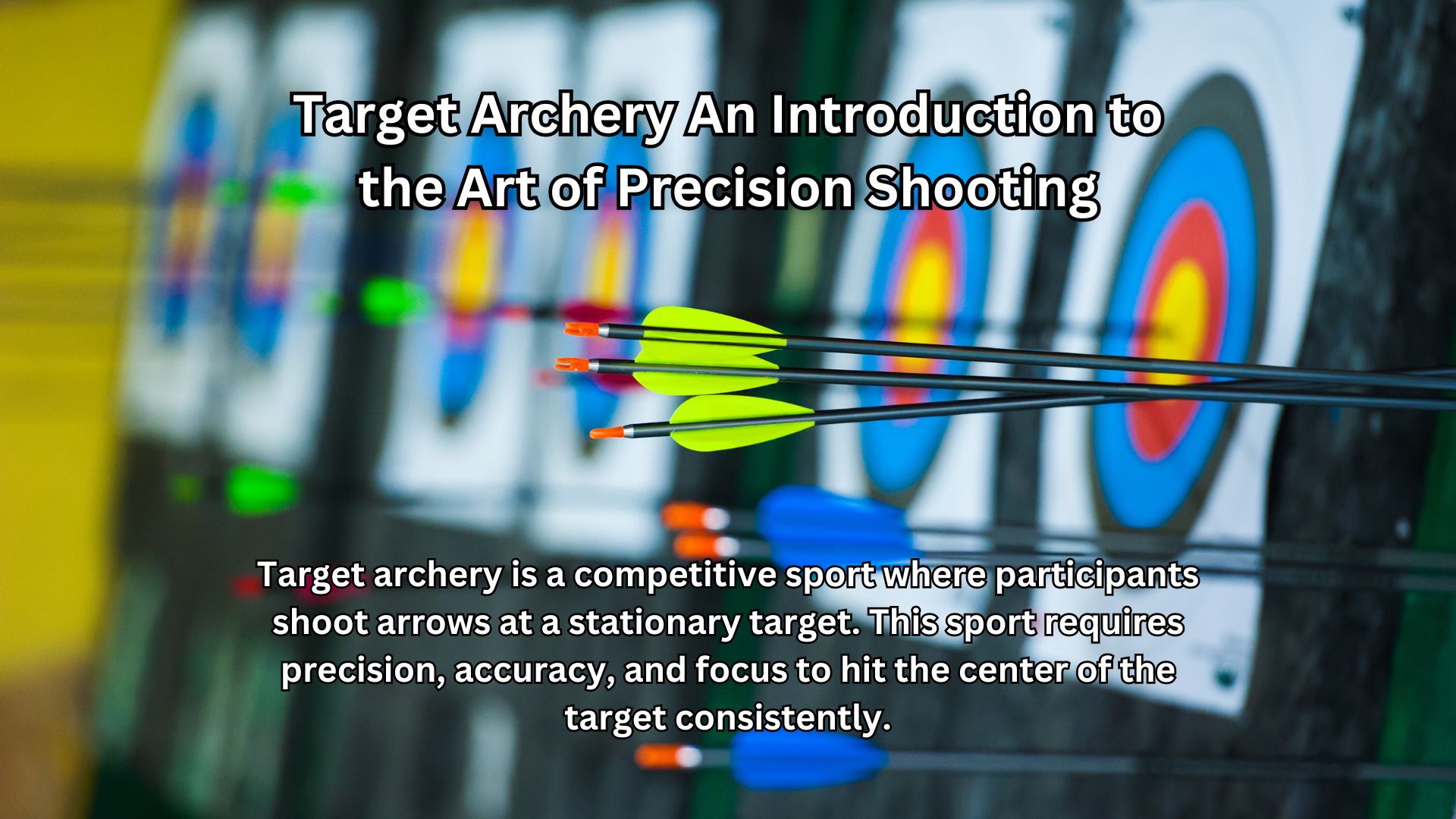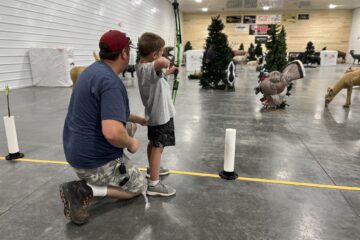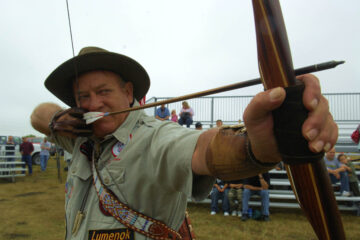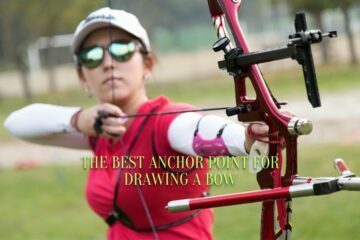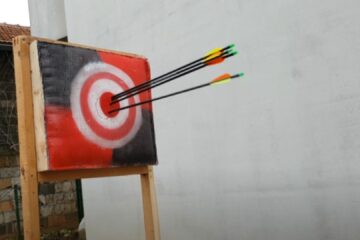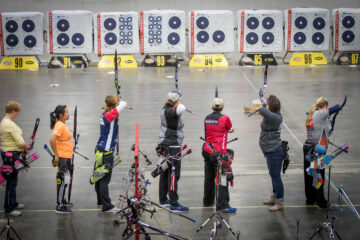Target archery is a competitive sport where participants shoot arrows at a stationary target. This sport requires precision, accuracy, and focus to hit the center of the target consistently.
In recent years, target archery has gained popularity worldwide, with tournaments and competitions held at both national and international levels. Archers use specialized bows and arrows designed for accuracy, and the skill of shooting is honed through practice and experience.
Different Types of Bows Used in Target Archery
- Recurve bows are the most commonly used type of bow in Target Archery. They have a curved shape that allows for more energy to be stored in the bowstring, which results in a faster arrow speed and a flatter trajectory.
- Compound bows use a system of pulleys and cables to reduce the amount of force required to hold the bowstring at full draw, making them easier to shoot for longer periods of time.
- Traditional longbows are the simplest type of bow, consisting of a single piece of wood with no additional technology.
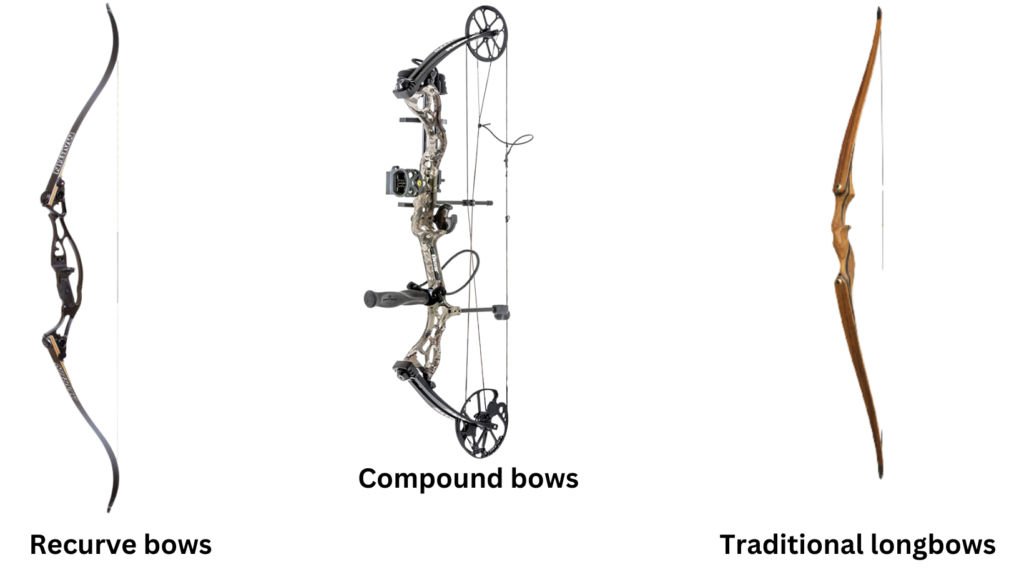
In addition to the type of bow used, there are several different types of Target Archery competitions. each with its own unique rules and formats. Here are some of the most common types:
Different Types of Target Archery Competitions
Olympic-style Target Archery:
This is the most common type of Target Archery. Olympic-style archery is a modern form of archery. That is practiced in competitions at the Olympic Games and other international events.
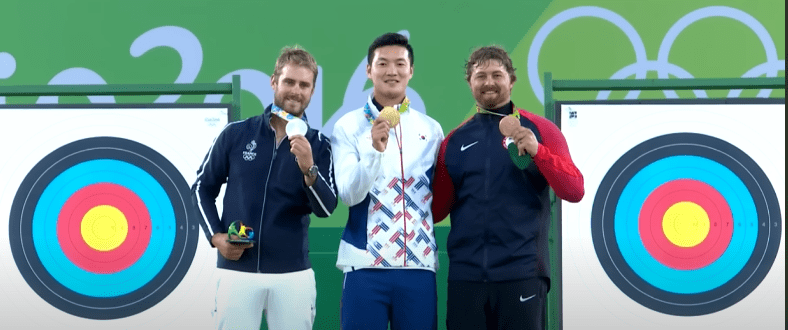
In the sport of Target Archery, participants engage in shooting arrows over impressive distances of up to 90 meters. However, the standard competition distances for the two main types of bows used are 70 meters for recurve bows and 50 meters for compound bows.
These distances are typically marked by the recognizable five-color target, featuring 10 scoring zones and rings colored in gold, red, blue, black, and white.
The competition consists of a number of rounds, during which athletes shoot a set number of arrows at the target from a set distance. In the qualifying round, each athlete shoots a total of 72 arrows, divided into 12 ends of 6 arrows each.
The scores from the qualifying round are used to rank the athletes and determine the seeding for the elimination rounds.
Indoor Target Archery:
Indoor Target Archery is a variation of the sport of archery that takes place indoors, typically in a large hall or arena.
The rules and equipment used in indoor target archery are similar to those used in outdoor target archery, with the main difference being the distance between the archer and the target.
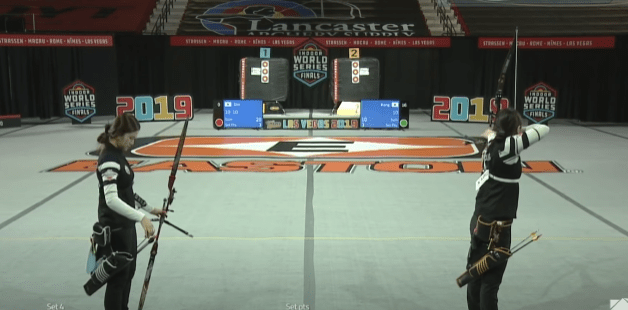
Archers in indoor target archery shoot at a target placed at a distance of 18 meters (or 20 yards) from the shooting line. The target has 10 concentric rings and a bullseye in the center, just like the one used in outdoor target archery.
The competition in indoor target archery typically follows the same format as outdoor, with qualifying rounds and elimination rounds leading up to the medal matches.
However, due to the shorter distance, the arrows travel faster and there is less time for the archers to react and adjust their aim. This means that indoor target archery requires a high level of accuracy and consistency from the archers.
Indoor target archery is a popular sport for both recreational and competitive archers and is often used as a way to practice and improve skills during the off-season for outdoor archery.
It is also a popular event at international competitions, including the World Indoor Archery Championships.
Field Archery:
This type of archery takes place outdoors and involves shooting at targets in a wooded area. The targets are often 3D and placed at varying distances and angles.

3D Archery:
This is similar to Field Archery, but the targets are always 3D animal shapes placed at varying distances and angles.
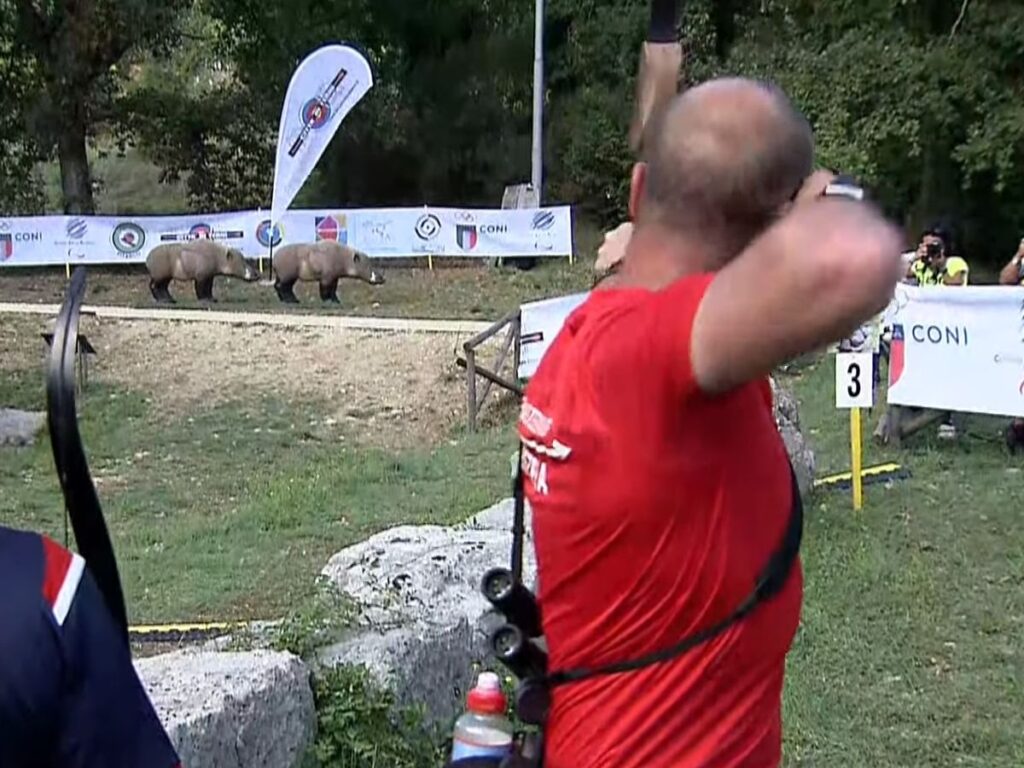
Clout Archery:
In this type of archery, archers shoot at a flag or target placed at a very long distance, often up to 180 meters away.

Each type of Target Archery requires different skills and equipment, so it’s important to choose the type that best suits your interests and abilities.
Equipment Needed for Target Archery
Target archery is a sport that requires specialized equipment to participate safely and effectively. While the specifics of your equipment may vary depending on your level of experience and personal preferences, the following are the essential items you will need to get started in target archery.
Bow
The bow is the primary piece of equipment used in target archery. There are two main types of bows used in target archery:
- Recurve bow: A traditional bow with limbs that curve away from the archer. Recurve bows are a popular choice for beginners and are used in Olympic-style archery competitions.
- Compound bow: A modern bow that uses a system of pulleys and cables to reduce the amount of force required to hold the bowstring at full draw. Compound bows are popular with experienced archers and are often used in hunting and 3D archery competitions.
When choosing a bow, it’s important to consider factors such as your experience level, budget, and intended use. A reputable archery shop can help you choose the right bow for your needs. Our Best Compound Bow for Beginners can also help.
Arrows
Arrows are projectiles that are shot from the bow. The type of arrows you use will depend on your bow’s draw weight and length, as well as your shooting style and intended use.
When choosing arrows, consider factors such as material (carbon, aluminum, or wood), length, weight, and fletching (the vanes or feathers on the back of the arrow).
Quiver
A quiver is a container used to hold your arrows while shooting. Quivers can be attached to your bow or worn on your hip or back. There are several types of quivers, including hip quivers, back quivers, and bow-mounted quivers.
Armguard
An armguard is a piece of protective equipment that is worn on the forearm to prevent the bowstring from hitting and injuring your arm during the shot. Armguards come in various materials, including leather, plastic, and neoprene.
Finger Tab or Release Aid
A finger tab or release aid is used to protect your fingers and improve your grip on the bowstring during the shot.
Finger tabs are made of leather or synthetic materials and are worn on the fingers that grip the bowstring.
Release aids are mechanical devices that attach to the bowstring and release the string when triggered.
Sight
Archers attach a device called a sight to their bow to assist them in aiming at the target. Sights come in various styles, such as pin sights and adjustable sights, and their purpose is to help align the bowstring with the target.
Stabilizer
A stabilizer is a device attached to the bow that helps reduce vibration and improve balance during the shot. Stabilizers come in various lengths and weights and can be adjusted to suit your shooting style.
Target archery equipment can be complex, but by starting with the basics, you can get started in the sport with minimal investment.
As you progress in your archery journey, you can invest in more specialized equipment to improve your accuracy and overall performance.
Always prioritize safety and work with a reputable archery shop or coach to ensure you are using equipment that is safe and appropriate for your skill level.
Techniques for Target Archery
This is a precision-based sport that requires a combination of physical skill, mental focus, and proper technique. Whether you are a beginner or an experienced archer, mastering the following techniques can help improve your accuracy and overall performance in target archery.
Stance
Your stance is the foundation of your shot. To achieve a consistent and accurate shot, your stance should be stable and balanced. Here are some tips for proper stance:
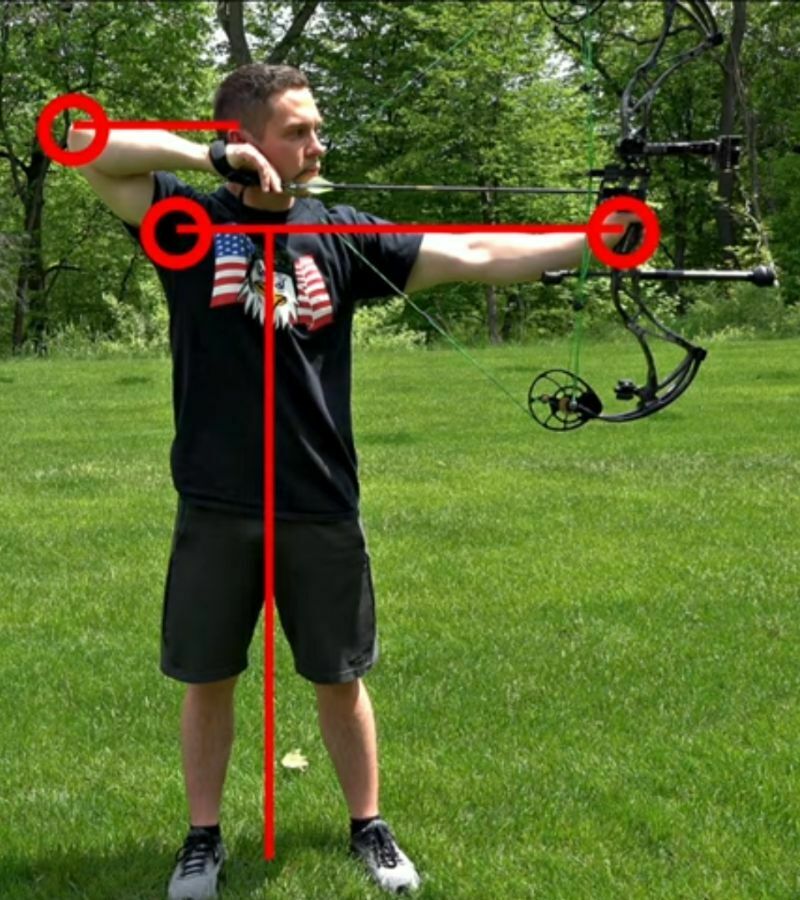
- Stand with your feet shoulder-width apart, perpendicular to the target line.
- Keep your weight evenly distributed between both feet.
- Align your body perpendicular to the target line.
- Keep your head level and look straight ahead.
Grip
The grip is the way you hold the bow. It’s important to have a comfortable and consistent grip to maintain control of the bow during the shot. Here are some tips for proper grip:
- Use the pads of your fingers to grip the bow handle, not the fingertips.
- Keep your grip relaxed and consistent.
- Avoid gripping the bow too tightly, as this can cause tension in your hand and arm.
Anchor Point
The anchor point is the point where you draw the bowstring to your face. Having a consistent anchor point is crucial for accuracy and consistency in your shots. Here are some tips for finding your anchor point:
- Choose a point on your face where you can consistently draw the bowstring to.
- Use the same anchor point for each shot.
- Your anchor point should be comfortable and repeatable.
Aiming
Mastering aiming is a crucial aspect of archery that requires practice and patience. Properly lining up the bowstring, sight, and target is essential for consistently hitting your intended target.
Here are some tips for proper aiming:
- Keep both eyes open while aiming.
- Focus on the target and not the sight pins.
- Use the sight pins to help align the bowstring and target.
- Practice aiming at different distances to improve your accuracy.
Release
The release is the moment when you release the bowstring from your fingers. A smooth and consistent release is important for accuracy and consistency in your shots. Here are some tips for proper release:
- Release the bowstring using a relaxed and controlled motion.
- Avoid flinching or jerking your hand during the release.
- Release the bowstring at the same point in your breathing cycle for consistency.
Mastering these techniques takes time, practice, and patience. By focusing on proper stance, grip, anchor point, aiming, and release, you can improve your accuracy and overall performance in target archery. Remember to stay relaxed, have fun, and always prioritize safety.
Benefits of Target Archery
This is a sport that has been enjoyed by people of all ages and skill levels for centuries. In addition to the enjoyment of the sport itself, there are many benefits to participating in target archery.
A few of these benefits are listed below:
Physical Benefits
Target archery requires a significant amount of upper body strength, particularly in the arms, chest, and back. Pulling back a bowstring requires both strength and endurance, which can help improve overall physical fitness. Regular practice can also improve hand-eye coordination and fine motor skills.
Mental Benefits
Target archery requires focus, concentration, and discipline. To shoot accurately, an archer must clear their mind and focus solely on the target. This mental discipline can help improve overall mental health and well-being, including reducing stress and anxiety.
Social Benefits
Target archery can be a social sport, providing opportunities to meet new people and make new friends. Archery clubs and competitions offer opportunities to connect with other archers who share a common interest.
Competitive Benefits
For those who enjoy competition, target archery can provide opportunities to compete at the local, national, and even international levels. Competing can help improve performance, build confidence, and provide a sense of achievement.
It offers a wide range of benefits, including physical, mental, social, outdoor, and competitive benefits.
Whether you are looking to improve your overall fitness, reduce stress, make new friends, or compete at a high level, This sport has something to offer.
So why not give it a try and see what benefits it can bring to your life?
This is also a great way to connect with others who share a passion for the sport. There are many clubs and organizations that offer opportunities for archers to compete, train, and socialize with like-minded individuals.
If you are interested in trying Target Archery, there are many resources available to help you get started.
Local archery clubs and organizations can provide instruction, equipment rentals, and opportunities to participate in competitions.
Online resources such as instructional videos and forums can also be helpful for beginners.
Conclusion In Target Archery
Target Archery is a challenging and rewarding sport that offers physical, mental, and social benefits.
With the right equipment and training, anyone can learn to shoot accurately and enjoy the thrill of hitting the target.
Whether you are interested in competing at the highest levels or simply enjoying the sport for fun, This is a great way to stay active and connect with others.
Frequently Asked Questions
Q1. What is the best type of bow for target archery?
A1. Recurve bows are the most popular type of bow for target archery, as they are easy to use, affordable, and versatile. However, the choice of the bow depends on the archer’s preference, skill level, and budget.
Q2. How do I improve my aim in target archery?
A2.Improving aim in target archery requires practice, patience, and proper technique. Archers should focus on developing a consistent form, adjusting their sight or aiming point as needed, and practicing regularly to build muscle memory and accuracy.
Q3. Can anyone practice target archery?
A3. People of all ages and abilities can practice target archery, and individuals with physical disabilities can take advantage of available modifications for the sport.
However, it is important to receive proper instruction and training before beginning to ensure safety and effectiveness.
